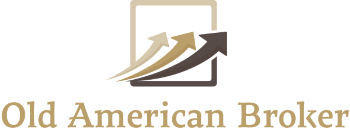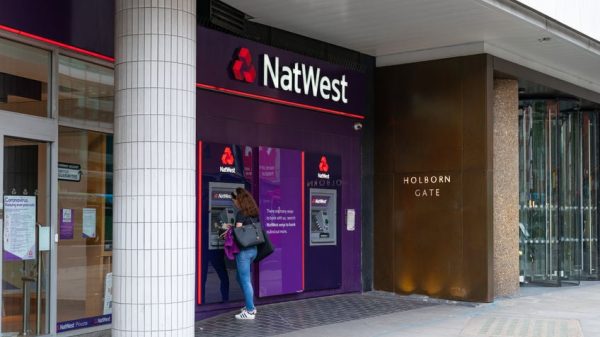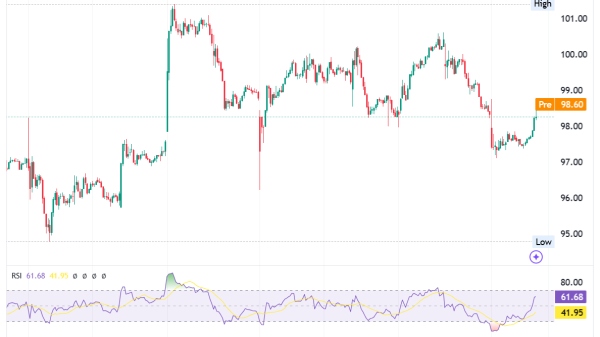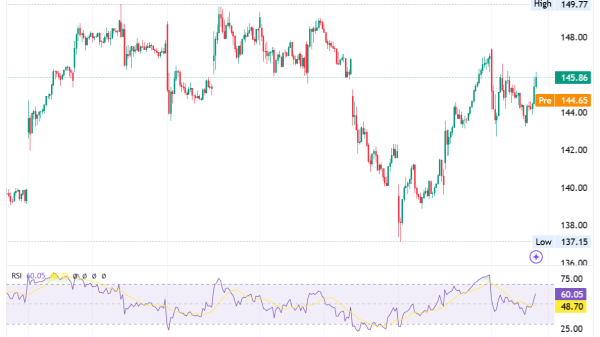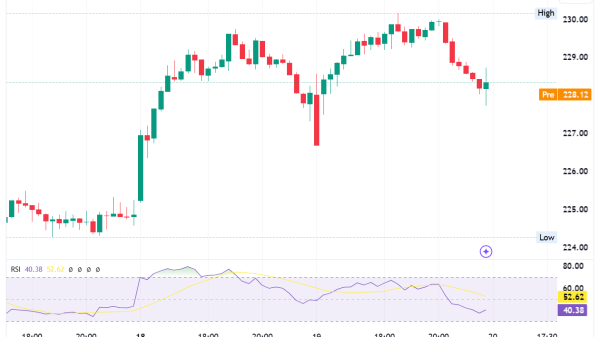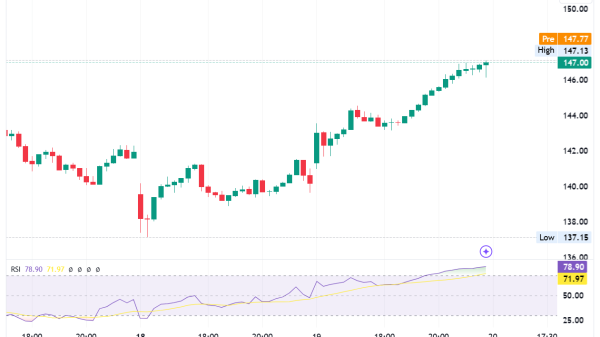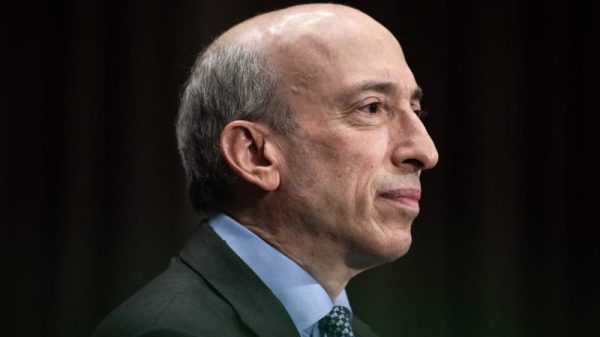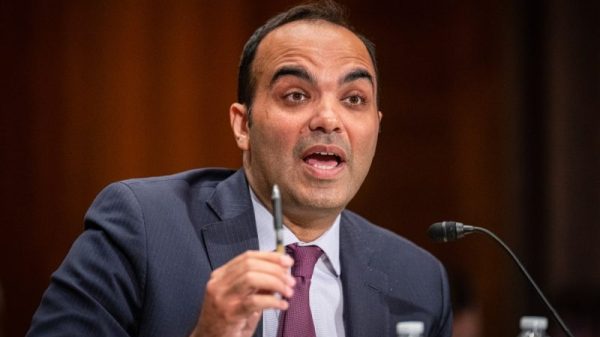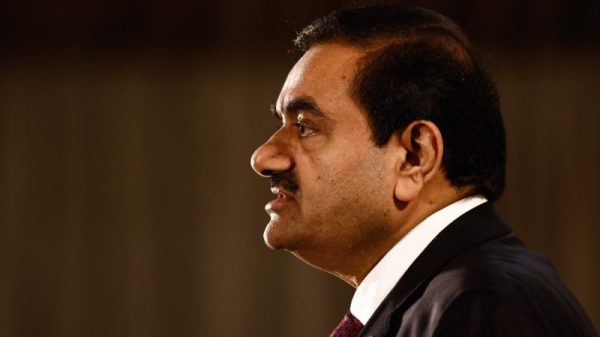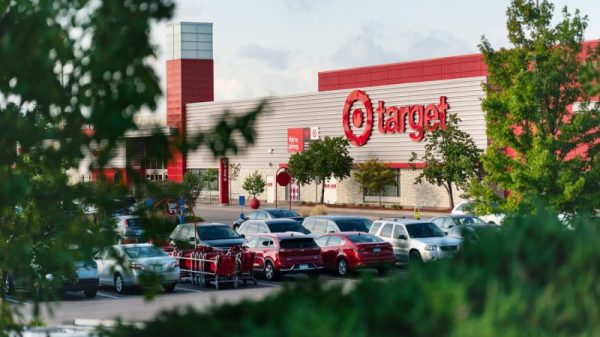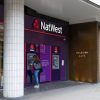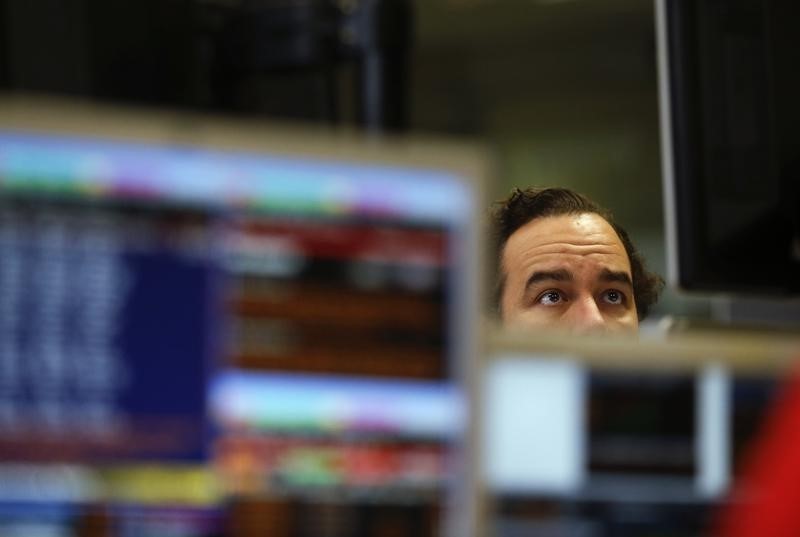
JBT Corporation (JBT), a global technology solutions provider to high-value segments of the food and beverage industry, reported a strong performance in its third-quarter earnings call, with significant year-over-year growth in revenue and adjusted EBITDA. The company also discussed its upcoming merger with Marel and its strategic focus on the automated guided vehicle (AGV) business, which is anticipated to contribute notably to its revenue streams.
Key Takeaways
- JBT’s Q3 revenue rose to $454 million, a 12.4% increase from the previous year.
- Adjusted EBITDA for the quarter was $82 million, up 23% year over year.
- The company’s adjusted EPS increased to $1.50 from $1.11 in Q3 2023.
- Full-year revenue and adjusted EBITDA are expected to grow by 3% to 5% and around 10%, respectively.
- JBT is set to incur approximately $30 million in non-cash pretax charges in Q4 due to pension plan settlements, with an additional $145 million in charges expected in Q1 2025.
- The company secured a $900 million Term Loan B for its merger with Marel, which is expected to close by the end of 2024.
- Strong orders totaling $440 million for the quarter, with a significant demand recovery in the poultry sector and growth in the AGV business.
- The AGV segment is projected to maintain high margins, targeting over 20% for the year.
- North America identified as the primary area for order strength, with a quarter-over-quarter increase in poultry orders.
Company Outlook
- JBT anticipates continued growth into 2025, driven by its diversified portfolio and strategic planning.
- The company is positioned to capitalize on cross-selling opportunities within the AGV business and warehouse automation.
- Regulatory approvals for the merger with Marel are expected from the EU and Australia by the end of November.
- Post-acquisition, JBT is confident in achieving $125 million in synergies and improvements in the protein markets.
Bearish Highlights
- JBT will face substantial non-cash pretax charges due to pension plan settlements in the coming quarters.
Bullish Highlights
- The AGV business is expected to exceed $150 million in revenue for the year with high profitability.
- The aftermarket business showed a 5% growth, with further improvements anticipated from the integration with Marel.
Misses
- There were no specific misses reported in the earnings call.
Q&A Highlights
- Brian Deck invited follow-up questions after discussing the company’s performance and strategies, emphasizing the importance of on-time parts delivery and customer relationships through the OmniBlu digital platform.
JBT’s earnings call painted a picture of a company on the rise, with strong financial results and strategic maneuvers positioning it well for future growth. The anticipated merger with Marel is a significant move that will likely enhance the company’s market position and capabilities. With a focus on high-margin businesses like AGV and a stable growth in aftermarket sales, JBT is setting the stage for a robust performance in the upcoming years.
InvestingPro Insights
JBT Corporation’s strong third-quarter performance is further supported by real-time data from InvestingPro. The company’s market capitalization stands at $3.59 billion, reflecting its substantial presence in the food and beverage technology solutions sector. JBT’s price-to-earnings (P/E) ratio of 21.18 (adjusted for the last twelve months as of Q2 2024) suggests that investors are willing to pay a premium for the company’s earnings, possibly due to its growth prospects and strategic initiatives like the Marel merger.
InvestingPro Tips highlight JBT’s financial stability and shareholder-friendly practices. The company has maintained dividend payments for 17 consecutive years, demonstrating a commitment to returning value to shareholders. This aligns with the company’s reported strong financial performance and positive outlook. Additionally, JBT operates with a moderate level of debt and has liquid assets exceeding short-term obligations, which provides financial flexibility as it pursues growth opportunities and navigates the upcoming merger with Marel.
The company’s profitability is underscored by its impressive return on assets of 21.83% for the last twelve months as of Q2 2024. This efficiency in utilizing assets to generate profits supports JBT’s ability to invest in high-growth areas like the AGV business, which management highlighted as a key contributor to future revenue.
It’s worth noting that JBT is trading near its 52-week high, with the stock price at 99.25% of its peak. This could be interpreted as market confidence in the company’s recent performance and future prospects, including the anticipated synergies from the Marel merger.
For investors seeking more comprehensive analysis, InvestingPro offers additional tips and insights beyond those mentioned here. In fact, there are 5 more InvestingPro Tips available for JBT, which could provide valuable context for understanding the company’s market position and potential.
Full transcript – John Bean Technologies Corp (NYSE:JBT) Q3 2024:
Operator: Good morning, and welcome to JBT Corporation’s Third Quarter 2024 Earnings Conference Call. My name is Perla, and I will be your conference operator today. As a reminder, today’s call is being recorded. At this time, all lines have been placed on mute to prevent any background noise. After the speakers’ remarks, there will be a question-and-answer session. [Operator Instructions]. Thank you. I will now turn the call over to JBT’s Director of Investor Relations, Marlee Spangler to begin today’s conference.
Marlee Spangler: Thank you, Perla. Good morning, everyone, and welcome to our third quarter 2024 earnings conference call. With me on the call is our Chief Executive Officer, Brian Deck; and Chief Financial Officer, Matt Meister. In today’s call, we will use forward-looking statements that are subject to the safe harbor language in yesterday’s press release and 8-K filing. JBT’s periodic SEC filings also contain information regarding risk factors that may have an impact on our results. These documents are available in the Investor Relations section of our website. Also, our discussion today includes references to certain non-GAAP measures. A reconciliation of these measures to the most comparable GAAP measure can be found in the Investor Relations section of our website. Now I’ll turn the call over to Brian.
Brian Deck: Thanks, Marlee, and good morning, everyone. We were very pleased with JBT’s results for the third quarter. As expected, we posted double-digit year-over-year revenue growth and captured meaningful margin expansion. Moreover, we continue to generate strong orders and benefit from the ongoing recovery in demand from the global poultry end market. Overall, our progress and performance in the third quarter reinforces our confidence in our full-year expectations of 3% to 5% revenue growth in 2024 and adjusted EBITDA growth of 10% at the midpoint of our guidance. Matt will walk you through an analysis of the third quarter. He will also discuss the securing of commitments for financing the morale merger. Then I will speak about end market and geographic turns, discuss updates on the combination with Marel and provide some highlights on our exceptional automated guided vehicle business. Matt?
Matthew Meister: Thank you, and good morning. As Brian mentioned, we achieved strong growth and margin improvement in the third quarter of 2024. Revenue of $454 million increased 12.4% year-over-year. As anticipated, we converted our strong backlog to revenue and recover the revenue shortfall from the second quarter. Adjusted EBITDA of $82 million increased 23% year-over-year and our adjusted EBITDA margin of 18% increased 160 basis points. This year-over-year improvement was driven by higher volume flow through as well as cost savings from both our restructuring program and supply chain initiatives. Adjusted EPS in the third quarter was $1.50 versus $1.11 in the prior year. EPS benefited primarily from our strong operational performance and positive net interest income. Year-to-date, we generated free cash flow of $79 million. For reference, on a trailing 12-month basis, as of September 30th, we achieved free cash flow of $184 million. Our strong performance in the third quarter is the result of higher income and improved working capital management. And for the full-year, we remain confident in our ability to achieve a free cash flow conversion rate in excess of a 100%. Given JBT’s strong year-to-date performance and backlog, we are reiterating our full-year guidance for revenue, adjusted EBITDA, and adjusted EPS. We are however, updating guidance for income from continuing operations and GAAP EPS, which reflect our plan to settle all outstanding obligations of JBT’s pension plan through a combination of voluntary lump sum settlements and the purchase of an annuity contract. And in the fourth quarter, we expect a portion of eligible participants to elect to receive lump sum settlements from the plan. And as a result, we expect to incur approximately $30 million in non-cash pretax charges during the quarter. This brings our full-year estimate for income from continuing operations to $116 million to $125 million, and GAAP EPS to $3.60 to $3.90. Additionally, in the first quarter of 2025, we expect to settle the remaining obligations of the plan and anticipate further non-cash pretax charges of approximately $145 million. Given the plans fully funded status, we anticipate these actions will have an immaterial impact on cash flow. Lastly, as outlined in our press release, in October, we secured financing commitments contingent on the completion of the merger with Marel. Once executed, we will issue a $900 million Term Loan B and expand our existing revolving credit facility to $1.8 billion. Funds from this new capital structure, along with cash on the balance sheet will be used to pay the cash portion of the transaction, refinance Marel’s outstanding debt and pay transaction related expenses. As a first time issuer in the Term Loan B market, we are very pleased with the overall demand and pricing structure. With an offering that was more than 3x oversubscribed, we were able to upsize and achieve favorable pricing. Additionally, we believe that lenders’ willingness to add a leverage-based pricing step down indicates confidence in management’s ability to de-lever the business. As we have stated, we are committed to reducing JBT’s leverage to less than 3x by year end 2025. With that, I’ll turn the call back to Brian.
Brian Deck: Thanks, Matt. Let me start with order trends. Orders, which totaled $440 million in the quarter, increased 10% from the prior year period. We feel good about what the order strength means for the current state of our business and it positions us well as we plan for 2025. Driving the overall gains in orders, we enjoyed continued recovery in demand from the poultry end market, which showed improvement globally. Pet food, food and vegetable and pharma end markets also experienced healthy demand in the quarter. Orders at AGV normalized from the record second quarter. While there were pockets of weakness, including certain CPG areas like beverages, our overall strength is a function of JBT’s broad portfolio and end market and customer exposure. As we have said, we have the diversified portfolio to serve our food and beverage customers regardless of changing consumer preferences. Geographically, we experienced a nice pickup in order activity in Asia and a good quarter in Europe. North America also experienced good order momentum. As we mentioned last quarter, our AGV business is posting record sales and orders. Secular demand for facility automation, which is critical to addressing labor shortages and high costs remains robust. Within the factory and warehouse automation market, AGV bodes a differentiated product, the results of decades of experience, the quality of our technology and ability to integrate with customers’ operations. Over the past few years, we have invested heavily in AGV’s R&D and adjusted its business model. Specifically, we have focused on the intelligence, safety, and service element of our value proposition, while focusing on larger scalable projects with our customers as opposed to bespoke projects. This strategy is paying off. We are seeing customers who installed AGV at one or two warehouses returned to us as they seek to establish an expanded automation solution across their enterprise. Additionally, with the introduction of our proprietary motion operating system, we have moved to a subscription model, which requires a multi-year software contract along with the parts and service contract. This allows for a high touch premium value proposition based on delivering the highest performance and safety throughout the life of our systems with constant access to the most recent software features and cybersecurity upgrades. With this model, we expect recurring revenue continue to grow meaningfully as we build out the installed base. At the same time, as we discussed last quarter, changes to our manufacturing process and product standardization have improved internal efficiency and cost. As a result, we have enhanced our ability to deliver AGV systems and reduce lead times to address ongoing robust demand. Moving on to even bigger developments on the merger with Marel. We continue to focus on integration planning and day one preparedness, including an evaluation of our future organizational structure. In our planning, we are viewing our businesses through the lens of the customer to create a go-to-market structure that aligns with their needs. We have also sought the capital — sought to capitalize on the respective strengths of JBT and Marel’s complementary portfolios enabling us to optimize operational synergies, while providing the most comprehensive solutions to customers. On the regulatory front, we are nearing the final stages of completing the required approvals. We have been engaged in an in-depth prenotification process and dialogue with the European Commission and have received feedback that we will be able to formally file our notification to the EC in the coming days. Once we submit this merger filing, a 25-day business review period begins, after which we anticipate receiving formal approval. In terms of the voluntary takeover itself, JBT and Marel will work with FSA in Iceland to determine the appropriate extension, which will provide adequate time following the regulatory approvals for Marel shareholders to tender their shares. JBT and Marel issue press releases related to the extension of the offer. Based on these most recent developments, the timeline to close remains on or about the end of 2024. And based on our extensive outreach and conversations with Marel shareholders, we remain confident that they are supportive of the merger. Lastly, I want to thank the JBT team members. JBT’s growth, operational excellence and passionate commitment to our customers wouldn’t be possible without our people around the world. Now let’s open up the call. Operator?
Operator: Thank you. And we’ll now begin the question-and-answer session. [Operator Instructions]. And your first question comes from the line of Mig Dobre with RW Baird. Please go ahead.
Mircea Dobre: Thank you. Good morning everyone.
Brian Deck: Good morning.
Mircea Dobre: So Brian, you spent maybe more time than normal talking about AGV, and it sounds like this is a portion of the business that is doing quite well. It would be great to get a bit of a reminder from you in terms of the size of this business at this point, especially it’s been growing so much. And I’m curious how margins look like for this product? Is this a positive for mix? Or is it maybe a little bit below your average portfolio margin?
Brian Deck: Right. Thanks for the question. So in terms of revenue, they will be north — a little bit north of a $150 million this year. With impressive growth, like you said, north of 30% growth this year. And in terms of — from a margin perspective, if you look at JBT’s guidance for the year is 17% to 17.5%, they are above that range there. They’re — we’re striving for 20% plus this year.
Mircea Dobre: Interesting. And as you think about this business and its potential, I’m sort of curious as to how you think two, three years out? And is there anything within the AGV business that would be able to either cross-sell or cross pollinate with what Marel is doing some of their customers? Yes, would love some comments on that as well.
Brian Deck: Sure. So, yes, just if you think about the portfolio that they have, anywhere where you have warehouse automation it’s applicable. Certainly, quite a few of our CPG customers, beverage customers are using these operations, these AGV vehicles. I would say probably the easiest area, if you will to cross-sell with this would be on their pet food business. So the Wenger acquisition from a couple of years ago. There are potentially opportunities as you go downstream with some of the other end markets that they have once they get into a warehouse stage that has a potential. But certainly, I would say, the more traditional CPG type and pet food type items, that’s the clear opportunity.
Mircea Dobre: Got it. Then maybe on a core business, poultry sounds better. I’d love a little more insight as to what you’re hearing from customers there. I mean frankly, why are things getting better? How sustainable do you think this is into 2025?
Brian Deck: Right. So it’s good news. They continue to make good money. We continue to have good conversations with them. We are aware of several projects that they are working on, either from, I would say, a brownfield perspective, but also from a refurbishment or replacement of individual lines. So as they — obviously, they’ve had some pent-up or deferred investment over the years, we do generally feel good about it. So I think it never snaps back at the pace you would really want it to go, but we do have a consistent kind of say, improvement month-over-month, quarter-over-quarter. Our pipeline is good. We saw some — what was really nice to see in the third quarter was some orders on the primary side. So JBT is not a huge player in the primary side. We do chillers and some other systems. But what’s nice about that, that’s where Marel is particularly strong. So we’re hopefully — hoping that is a precursor to some of the strength that we would hope to see into 2025 and thereafter. I think in terms of visibility, I would say we probably have a good 18 to 24 months visibility as we sit here. Obviously, that could change if the fundamentals change, but the fundamentals are hanging in there for sure, both from an input perspective. We’ve seen some seasonal declines in the poultry prices. But overall, they remain at levels where our customers are quite profitable. So generally, we feel good about that. And we would expect kind of this slow, but steady march to get back to full recovery. And I think it kind of depends on, if we’re talking primary or secondary or end of line as to when you get to those full recoveries. But either ’25 or perhaps 2026 will recovery.
Mircea Dobre: I guess my final question, and this — I don’t know if you actually want to answer this or tackle the topic, but we’ve got an election year coming up in a few days. And the whole discussion around immigration and [indiscernible] deportations from Mr. Trump have certainly made headlines. And I do remember during the first Trump administration there was some disruption that protein processors have had ice rates, things of that sort that have impacted their labor force. In your discussions with customers, are they sort of looking at this as something that will need to be addressed on there end? Meaning this whole idea that we’re going to need some additional automation or equipment that is maybe more efficient in order to sort of manage the inherent risk to their labor force that could develop down the line? Thanks.
Brian Deck: Yes. It’s a very interesting and applicable question. I will say, over the last — what we have heard over the last few years is that labor has been more available. And I would say more of our efforts have been on improving yield, efficiency, et cetera, and a little bit less what we saw during the Trump administration on pure labor replacement. So under a circumstance where you have tighter controls on immigration, I frankly would expect more opportunities on going from, say, manual cut-up lines where you have folks standing shoulder-to-shoulder with knives and whatnot to more automated solutions. That would generally be the thesis under a Trump administration. Obviously, we’ll have to see how long it takes for that to play out and whatnot. And but that would generally bode well for companies like JBT and Marel.
Mircea Dobre: Appreciate it. Thank you.
Brian Deck: Thanks.
Operator: Your next question comes from the line of Ross Sparenblek with William Blair. Please go ahead.
Ross Sparenblek: Hi, good morning gentlemen.
Brian Deck: Good morning.
Ross Sparenblek: Right. Can you maybe help us size the poultry contribution to orders in the quarter? And then also your expectations for orders exiting the year into 2025? Just trying to get a sense of your seasonality versus potential acceleration as we think about the cadence for next year?
Brian Deck: Yes. So in terms of the incremental orders versus the second quarter, something in the range of $10 million to $15 million more, ballpark. So — and I would say we’re still — that does not yet bring us, I would say, fully back to kind of where we otherwise need to be kind of, as I mentioned, with Mig on the — where we get to full recovery. But decent improvements in the quarter, specifically, as I mentioned on the primary side.
Ross Sparenblek: Got it. Okay. So $10 million to $15 million more poultry quarter-over-quarter. I mean…
Brian Deck: In North America, specifically.
Ross Sparenblek: In North America.
Brian Deck: Yes. Now what was interesting, Ross is — so that was North America. We actually saw some improvements outside of North America as well, specifically Asia. So that was nice to see because as you know, Asia is kind of a lumpy business for us. They tend to do fuller lines, but we are starting to see some investments in poultry in Asia and actually Europe had a decent quarter as well.
Ross Sparenblek: Now that’s a perfect segue. So I’m trying to understand, I mean, is it more of a geographic angle between why you’re seeing more of an acceleration in your poultry orders versus Marel thus far? You have to see the third quarter results. Or is it kind of brownfield, greenfield, upstream, downstream, as you kind of noted with the strength in your business in the quarter?
Brian Deck: I won’t specifically talk to Marel and kind of where they’ve been. But I will just generally say, JBT does play further along in the line, it’s kind of that your second assumption. They are more upfront in full processing type primary secondary lines. JBT’s further down the line generally, which so they’re not as full line solutions. They tend to be one or two or three pieces of equipment, which are — have shorter sales cycles and shorter lead times versus a full system. So just a little bit different place where we play in the lines.
Ross Sparenblek: Okay. And then thinking about the real time line here, 25-day EU notice. I think that kind of mitigates any concerns from remedy, which is a positive. But can you just remind us of what other countries outside of Europe we should be watching out for as it relates to filings?
Brian Deck: Yes. So we’re really pleased with where we are with the EU. That’s been a very long process, a very collaborative process we’ve had with them, multiple back and forth. So to get to this stage, that’s a major milestone. As you — for those that are familiar with the EU, the EC filing process. So then giving us the green light to go ahead and the formal filing to kick off this 25-day waiting period is very, very positive. We have one other jurisdiction that we’re finalizing. I would say — I would characterize it as — and that’s Australia, doting some eyes and crossing a few Ts. That does — that is out there, but we feel confident that we’ll play itself out within the same time frame, which basically brings us to full regulatory expectation of approvals by the end of November. And then we would again extend the VTO, the voluntary takeover offer period to probably a couple of weeks after that. We’re working with Morale precisely the dates that we choose, and then we will announce that here in short order.
Ross Sparenblek: Perfect. All right. If I could maybe just get one more in. Now you’ve had more time with the business to look into the hood. Should we expect maybe upward revision to synergy targets once the acquisition is closed? Or maybe you can give us an early read there? It just looks like real margins and based all consensus, aren’t where they really need to be in regards to the pro forma targets and maybe there’s a little bit more cost out that will be required to hit your accretion goals?
Brian Deck: Well, I would say we have done quite a bit of work over the last six months. We have gotten to know them quite a bit. We certainly have a funnel and pipeline, if you will to deliver on the $125 million of all-in savings — all-in synergies. So I would just say we’re confident in that. Well, if we get to the point where we think we can do more, we’ll certainly let you know. But really, there’s only so much you can do until you actually combine businesses. In terms of visibility, perfect visibility. So I think it’s appropriate to just stick with the $125 million as I sit here.
Matthew Meister: Yes. I think the margin improvement that we’re also expecting is going to come from again, further recovery in the protein markets and how that benefits Marel in the higher volume. So not only is there synergies, but there’s also just the recovery in volumes, which will help drive improved margins at the Marel side.
Brian Deck: And certainly, they’re also — I mean they are also doing their own improvement efforts kind of regardless of, I would say, synergy opportunity.
Ross Sparenblek: All right. It’s perfect. I’ll leave it here. Congrats guys.
Brian Deck: Thank you.
Operator: Your next question comes from the line of Walter Liptak with Seaport Research. Please go ahead.
Walter Liptak: Hi, thank you. Good morning everyone. Congratulations on a nice quarter. Wanted to ask about the order strength and the recovery that we’re seeing in the poultry market. So it seems like it’s still early days, but as we look at it geographically, where do you expect most of the — where do you see the recovery strength coming from? Is it sounds like Asia is doing well. Europe is doing well. Maybe U.S. is not quite…
Brian Deck: Yes, I would say the pace of improvement, probably North America remains our biggest opportunity. For those who have been following, for years North America was always just — always the strongest market for us and it hasn’t been over the last two years or so. So typically, that’s our go-to in terms of strength and consistency. And so that’s why I do think just in terms of getting back to that level of strength and consistency is what we’re looking forward to. That would be the primary.
Walter Liptak: Okay. All right. Great. And then the aftermarket sales, we haven’t talked too much about that on this call, but the growth — how do you feel about the 5% plus revenue growth? And can you tell us about some of the initiatives that you’ve had to keep that growing and maybe any positives or negatives around aftermarket?
Brian Deck: Yes. Sure. No, we’re very happy with the 5% growth. As you know, that’s a more stable business than the equipment side. I think we had a 20% plus equipment growth in the quarter, and that’s obviously reflective of some of the recoveries and the strength in the backlog and whatnot that we have been talking about over the past few years. So if we can continue to deliver consistent mid-single digit aftermarket growth kind of in good times and bad, that’s a really good answer. Obviously, considering it does have a better margin profile. In terms of the things that we are doing, it is really about — providing there’s a couple of things, but the most important things that we have to continue to focus on is on-time delivery on parts. So we’re doing some additional work on making sure we’ve got the right parts in the right places and really focusing on that. Certainly, continue to penetrate with our OmniBlu digital offering helps us in terms of those relationships with our customers and having that more engaged model. And then lastly, our service network — making sure we — again, the right people in the right places, the responsiveness. So it’s about having the right metrics, looking through the eyes of the customer and one of the metrics that they feel are important not just things that you think about from a business perspective, like inventory turnover and whatnot, like really kind of flipping those metrics, and that’s the focus that we’ve had. And that’s the combination with Marel adds to our ability on the aftermarket side meaningfully, again, they’ve got some really well-developed parts distribution centers. So we’re working with that, how to optimize the usage of that, but also a pretty impressive service network in terms of their people and their coverage. So — and that’s usually one of the biggest constraints in terms of being able to serve our customers effectively, service techs are quite valuable, and they know the business and the products and the customers quite well. So that’s a really wonderful opportunity as we come together.
Walter Liptak: Okay. Great. Okay. Thanks so much.
Operator: Thank you. [Operator Instructions]. And there are no further questions at this time. I would like to turn it back to Mr. Brian Deck for closing remarks.
Brian Deck: Thank you all for joining us this morning. As always, Marlee will be available if you have any follow-up questions. Thank you. Have a great day.
Operator: Thank you. And this concludes today’s conference call. Thank you all for participating. You may now disconnect.
This article was generated with the support of AI and reviewed by an editor. For more information see our T&C.
